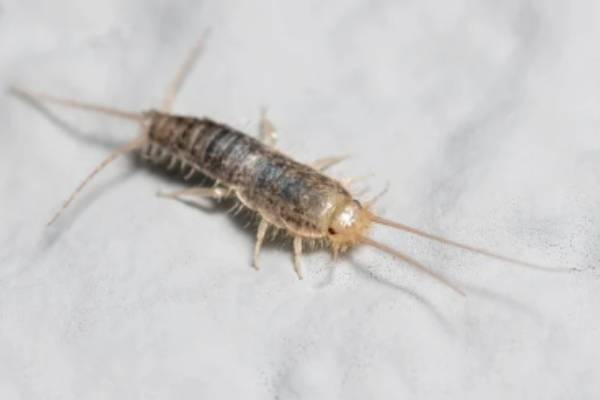The Role of Moisture in Attracting Silverfish to Your Home

Silverfish are small, wingless insects known for their silvery-gray color and quick, fish-like movements. While they may not bite or spread disease, their presence indoors is often a sign of an underlying issue, and moisture is usually at the root of it. These nocturnal pests thrive in humid environments and are especially drawn to areas of the home where dampness lingers, such as bathrooms, basements, and kitchens.
Understanding the link between moisture and silverfish infestations is critical to keeping them out of your living space. This article breaks down how excess humidity attracts these pests, where they’re most likely to hide, and why professional silverfish control is often the best long-term solution.
Why Silverfish Love Moist Environments
Silverfish require high humidity to survive and reproduce. In nature, they’re typically found under rocks, bark, or leaf litter. Indoors, they look for similar moist and shaded environments where they can remain undisturbed. Once they locate a suitable space, they lay eggs and multiply rapidly.
Here’s why moisture is essential to silverfish:
- Hydration source: Silverfish absorb water from the air and moist surfaces, making dry environments inhospitable.
- Molting process: High humidity supports their ability to molt multiple times, which is essential for growth and reproduction.
- Egg viability: Their eggs require dampness to hatch successfully, and humidity ensures the ongoing survival of the next generation.
- Food availability: Moisture-damaged materials, such as wallpaper, books, or clothing, become easier for silverfish to consume.
When indoor humidity stays above 60%, conditions become favorable for these pests to move in and multiply unnoticed.
Common Moisture Hotspots That Attract Silverfish
Many homes have areas that unknowingly create ideal conditions for silverfish. These pests are masters at staying hidden, and unless you know where to look, infestations can grow quietly over time.
High-risk zones include:
- Bathrooms: Steamy showers, leaky pipes, and poor ventilation create lingering humidity.
- Basements and crawl spaces: These areas often suffer from condensation, standing water, or soil moisture.
- Laundry rooms: Washing machines and utility sinks are common sources of hidden leaks or overspill.
- Kitchens: Under-sink cabinets or refrigerators may hide condensation or slow leaks.
- Closets and storage areas: Cardboard boxes, stored clothing, and books attract silverfish, especially if located near moist walls or floors.
Routine inspection and moisture control in these areas are essential for minimizing the likelihood of a silverfish infestation.
Damage Caused by Silverfish in Damp Spaces
While silverfish aren’t dangerous to humans, they can cause significant damage to household materials. Their feeding habits are based on starchy substances, including cellulose, sugars, and protein-based products. Damp environments enhance their access to these materials.
Potential damage includes:
- Paper products: Silverfish feed on book bindings, wallpaper glue, and important documents.
- Clothing and fabrics: Items stored in humid conditions may be chewed through or stained by silverfish droppings.
- Stored goods: Pantry items like oats, flour, and cereal attract them, particularly in areas with moisture-damaged packaging.
- Home finishes: Baseboards, insulation, and carpeting can be affected by long-term nesting or feeding.
Because they are so reclusive, damage often accumulates before homeowners notice the problem. This highlights the importance of not just removing silverfish but also controlling the humidity that attracts them in the first place.
Long-Term Moisture Control and Silverfish Prevention
Controlling indoor humidity is one of the most effective strategies for silverfish control. Maintaining dry, well-ventilated conditions reduces both the pests and the food sources they seek.
Best practices include:
- Use dehumidifiers: Particularly in basements, bathrooms, and other high-humidity zones.
- Fix leaks immediately: Dripping faucets, pipe condensation, and roof leaks should be addressed as soon as they’re discovered.
- Improve ventilation: Install exhaust fans in bathrooms and kitchens to reduce humidity from daily activities.
- Seal entry points: Close gaps in windows, doors, and foundation walls to limit pest access.
- Store items properly: Use sealed plastic bins instead of cardboard in damp-prone storage areas.
Because silverfish control often overlaps with broader home maintenance concerns, many homeowners benefit from a holistic approach. As explained in these eco-friendly pest solutions, reducing reliance on chemicals while addressing structural issues offers safer, longer-lasting results.
When Moisture Issues Require a Professional Approach
If you’re dealing with recurring silverfish sightings or suspect there are hidden nests in your home, a professional assessment is highly recommended. While moisture control is essential, locating and removing entrenched pests often requires specialized tools and techniques.
You should consider expert help if:
- Silverfish persist after fixing visible leaks or reducing humidity
- You find damage to books, clothing, or paper items in multiple rooms
- There are signs of silverfish activity in hard-to-reach areas like attics or behind walls
- DIY traps or sprays provide only temporary relief
- You’re unsure of the full extent of the infestation
Professionals not only eliminate current pests but also offer insights into structural and environmental conditions that may be contributing to the problem. As discussed in these reasons to hire professionals, expert services offer efficient, customized treatment plans that address both pests and the conditions that support them.
Give Moisture the Boot, and Silverfish Too
Silverfish thrive in places most homeowners overlook. If your home has damp corners and signs of unwanted pests, it’s time to act. Reach out to Ecoline Pest Control for expert help in reclaiming your space.


